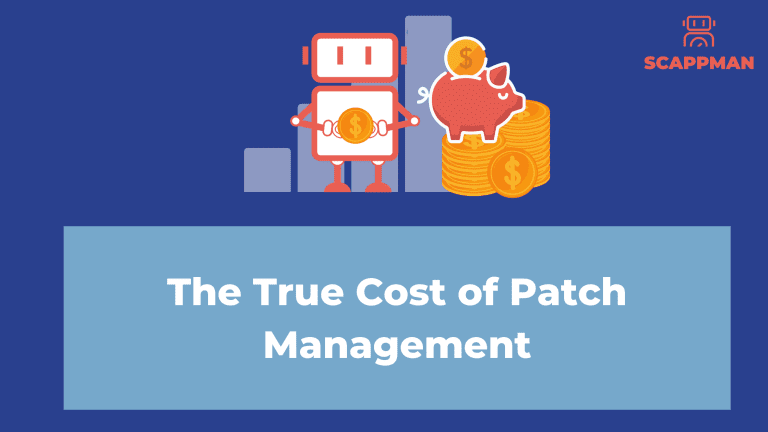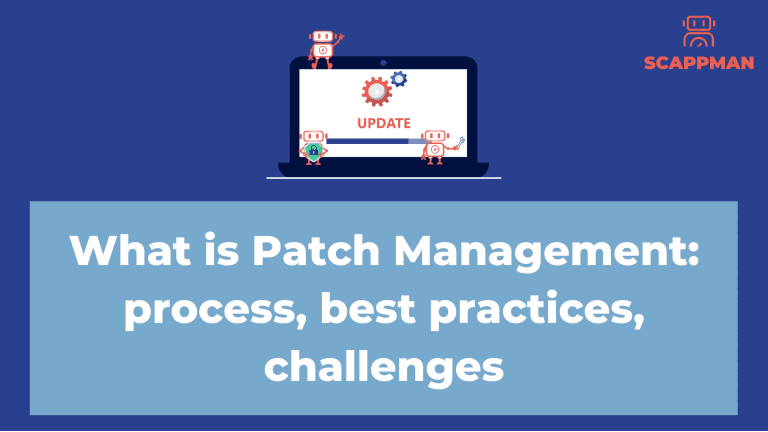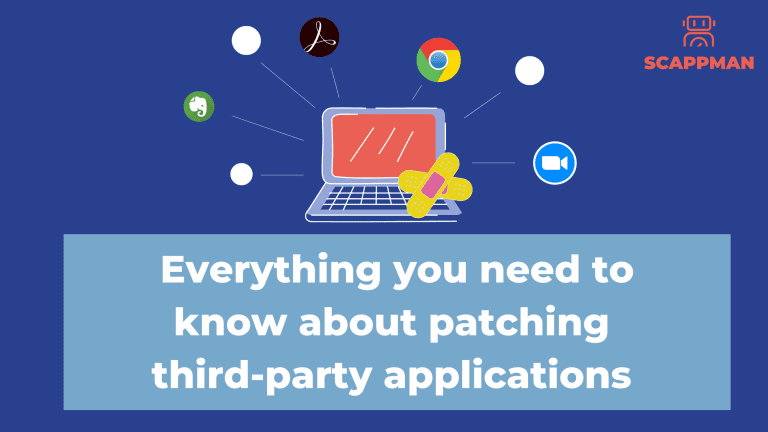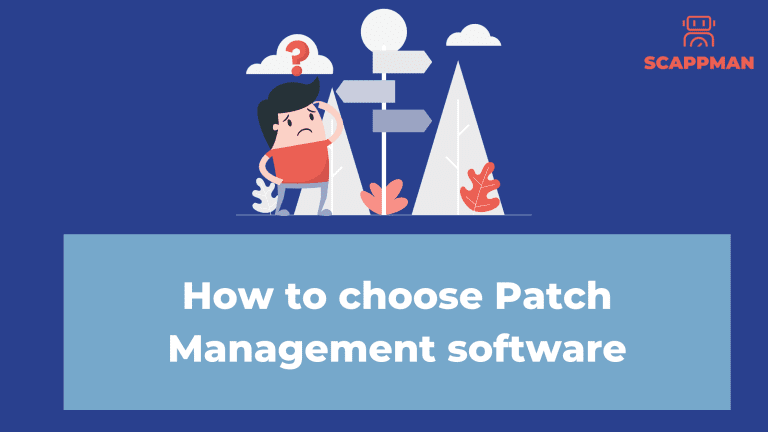
The True Cost of Patch Management
The connection between return on investment (ROI) and patch management may not be obvious. After all, patch management does not generate revenue for the company. Nevertheless, while this may be true, preventing losses certainly affects the company’s financial results. In other words, patch management helps you save money by reducing IT expenditures in long run. So, how much does patching your software save your company? It depends on a lot of factors: the number of applications you manage, the time required to patch, and how much stuff is involved in patch management, how often patches are released. Every unpatched application can profoundly cost the company- the average cost of a cyber attack is $1.1 million. In this post, we share the main factors, that affect patch management costs, and why you need automated patching solutions. What is patch management? Patch management is the process of managing patches or updates to software and firmware. It’s important because it keeps the software up-to-date and secure, closing known vulnerabilities. Patch management also minimizes disruptions to users by deploying patches in a timely manner. The goal of patch management is to keep systems operational and secure with minimal impact on the user. Patch management is an important part of IT security and should be included in any organization’s overall security strategy. By keeping software up-to-date, organizations can reduce their risk of being attacked by cybercriminals. Why do you need patch management? According to a study conducted by Ponemon Institute for ServiceNow: 60% of cyberattacks are caused because applications are not up to date 62% of the companies were unaware that they were vulnerable prior to the data breach 52% of respondents said their organizations are at a disadvantage in responding to vulnerabilities because they use manual processes. Despite that most IT departments still don’t pay much attention to patch management because they find patching complex and time-consuming. Indeed, patching is an infinite process: IT departments must continually identify and assess vulnerabilities, monitor and test patches, and deploy the patches to their systems. Factors you should consider when calculating patch management costs There is no universal answer to how much patch management costs. However, there are some factors that should be taken into consideration when making calculations: human resources cost (HR), frequency of patching (PF), time (T), scope (S). Mathematically, the formula for patch management costs calculation can be expressed as: Total costs = f (T, HR, S, PF). This model is way far from precise but it can be a starting point for identifying the patch management costs. Time (T) IT departments spend a lot of time on patch management. According to the Ivanty survey results, IT & security professionals spend 53% of their working time each month detecting and prioritizing vulnerabilities and 19% testing patches. Human resources (HR) Hiring certified cybersecurity experts and IT managers is essential in today’s business environment because such professionals manage IT infrastructure in an efficient way, protecting organizations from new security threats. However, as the number of cyberattacks has exponentiated, so has the demand for certified cybersecurity experts, which are few. The recruiting costs are tremendously high. Scope On average, a company uses around 110 applications. It means, that IT specialists must monitor 110 applications for the updates and patch them. Patch frequency Many people think that application updates are released according to some sort of schedule, like Patch Tuesday for Microsoft software. However, it’s not like that in most cases – there is no system. And let’s consider this: for example, Chrome releases a full OS update about every 4 weeks. Minor updates, such as security fixes and software updates, happen every 2–3 weeks. Only for patching Google Chrome, an IT specialist must go through the patch cycle 2-3 times a month. Cybersecurity costs Patch management is a process used to maintain system security by updating software and firmware on the devices. Patch management can be time-consuming, as patches must be evaluated for applicability and installed on systems. Additionally, patch management can result in an increase in system downtime. There are several true costs of patch management: threat response costs, system restoration costs, and downtime costs. Treat response costs Companies frequently choose a patch management strategy as a proactive means of preventing cyberattacks. Your IT department play catch-up with newly detected vulnerabilities: they spend most of their time (which costs a lot as we explained earlier) on detecting new patches, testing them to ensure they don’t break anything, pushing updates to the users etc. Restoration costs These are costs associated with reverting the system to the previous state to recover from the damage and other problems caused by unpatched security bugs. Downtime costs Downtime costs are often the most significant factor, and they can vary significantly depending on the organization’s size, industry, and other factors. A study by IDC found that the average cost of an hour of downtime for a company in the United States is $5,600. For a company with 1,000 employees, that would amount to more than $5 million per year. The cost of downtime can be even higher for industries such as healthcare or financial services. Why do you need automated patching? As we mentioned earlier, there is no exact time and date when vendors release patches, and it’s not possible to track all these updates manually. But leaving your systems unpatched can comprise your company. The only solution here is automated patching tools. Automated patching works by automatically scanning installed applications for new updates available. Updates and patches can then be set for automatic deployment, based on rules you establish. So, what does the best automated third-party patch management solution look like? Meet Scappman! Automated third-party patch management with Scappman Scappman is a 100%-cloud solution that automatically installs all the necessary updates for your applications. Scappman automates the whole process of uploading the application and updating it in Microsoft Intune environment. There are more than 500 third-party applications in Scappman App Store, that are always up to date and secure to





